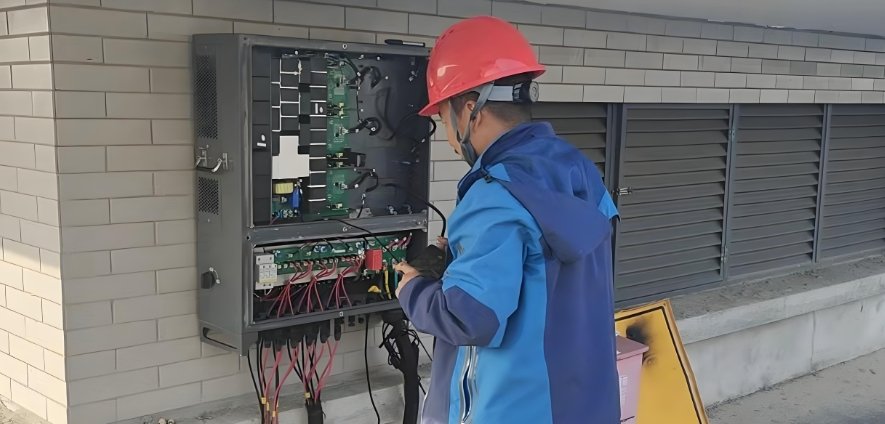The lifespan of an inverter is an important consideration when installing a solar energy system or any other system that relies on power conversion. Inverters are essential for converting DC power into AC power, and understanding their longevity can help you plan for future maintenance and replacement.
The lifespan of an inverter can vary depending on the type, quality, usage, and maintenance. Typically, inverters last 10 to 15 years, but there are several factors that can influence this.
Curious about how long your inverter should last and when it’s time for a replacement? Let’s dive into the key factors affecting inverter lifespan.
How Long Should an Inverter Last?
Inverters are built to last for a significant period, but like all electronic components, their lifespan can depend on usage and maintenance.
On average, an inverter should last between 10 and 15 years, depending on its quality and operating conditions.
1. Factors Affecting Inverter Lifespan
- [Quality of the Inverter](How does inverter quality impact its lifespan?)1: High-quality inverters from reputable brands tend to last longer. Premium models often come with better components and more advanced features that help them operate efficiently for years.
- Usage and Environment: Inverters that operate in harsh conditions, such as extreme temperatures or excessive humidity, may experience a shorter lifespan. Additionally, inverters used in systems with high energy output or frequent on-off cycles may wear out more quickly.
- Maintenance2: Regular maintenance and monitoring can extend the life of an inverter. Keeping the inverter clean and ensuring it is operating within its designed parameters can prevent premature failure.
2. Warranty and Lifespan
Most inverters come with a 5 to 10-year warranty. This reflects the expected lifespan of the unit. Some manufacturers offer extended warranties, especially for high-end models, which can provide additional assurance regarding their longevity.
| Factor | Impact on Lifespan |
|---|---|
| Inverter Quality | Premium models last longer |
| Usage & Environment | Extreme conditions can shorten lifespan |
| Maintenance | Regular upkeep can extend lifespan |
| Warranty | Typically 5 to 10 years |
When Should I Replace My Inverter?
Knowing when to replace your inverter is essential for maintaining system performance and avoiding disruptions in power supply.
You should consider replacing your inverter if it is no longer functioning efficiently or has exceeded its typical lifespan.
1. Decreased Performance
One of the most obvious signs that your inverter needs replacement is decreased performance3. If your inverter is no longer converting DC to AC power as efficiently or is producing significantly less power than before, it may be time for a new one. This could also be a sign that internal components, such as capacitors or switches, are failing.
2. Frequent Breakdowns
Frequent breakdowns4—such as system errors, sudden shutdowns, or a need for frequent repairs—indicate that the inverter is no longer operating optimally. This can lead to longer downtimes and inefficient energy conversion, and repairing the inverter may cost more than replacing it entirely.
3. End of Warranty
After the warranty expires (usually 10-15 years), it becomes more expensive and difficult to repair an inverter. At this point, it may be more cost-effective to replace it rather than continue maintaining an outdated model.
| Warning Signs | Suggested Action |
|---|---|
| Decreased Performance | Consider replacing the inverter |
| Frequent Breakdowns | Frequent repairs may indicate the need for replacement |
| End of Warranty | Consider replacing to avoid costly repairs |
What Is the Life Expectancy of an Inverter?
The life expectancy of an inverter is typically around 10 to 15 years, although this can vary depending on factors such as usage, maintenance, and the quality of the inverter.
High-quality inverters that are well-maintained may exceed 15 years, while lower-quality models may start showing signs of failure within 10 years.
1. Types of Inverters
- String Inverters: These are the most common type of inverter and generally last around 10-15 years, though this can vary depending on the brand and how well the system is maintained.
- Microinverters: Microinverters tend to have a slightly longer lifespan, averaging around 15-20 years. These are installed on individual solar panels and generally offer greater durability and flexibility.
- Hybrid Inverters: Hybrid inverters, which integrate energy storage with solar power systems, can last anywhere from 10-15 years, depending on the model.
2. Manufacturers' Guarantees
Different manufacturers offer varying guarantees. The typical warranty is between 5 and 10 years, with some brands offering extended warranties up to 20 years. The warranty reflects the expected operational life of the inverter, and the longer the warranty, the more likely the inverter is to last longer.
| Inverter Type | Typical Lifespan |
|---|---|
| String Inverters | 10-15 years |
| Microinverters | 15-20 years |
| Hybrid Inverters | 10-15 years |
Do Inverters Need to Be Serviced?
Like all electrical devices, inverters benefit from periodic servicing to ensure they continue to function optimally and last longer.
Inverters generally do not require extensive servicing, but regular checks and maintenance can help avoid potential issues and prolong their lifespan.
1. Routine Maintenance
Routine maintenance involves checking the inverter for dust, dirt, or any signs of wear and tear. It's also essential to check connections and cables to ensure everything is securely in place. Some inverters offer monitoring software that allows users to track system performance and detect any irregularities.
2. Cleaning and Inspection
Inverters should be cleaned periodically to prevent dust buildup, especially if they are installed in dusty environments. It’s also important to inspect the inverter for overheating, which may indicate a problem with ventilation.
3. Component Replacements
Over time, components such as capacitors or fans may need replacing, particularly if the inverter has been running continuously for several years. However, major repairs or replacements are generally not needed unless the inverter shows signs of failure.
4. Monitoring and Diagnostics
Many modern inverters have built-in monitoring systems that allow homeowners to track their performance. These diagnostic tools can alert you to potential issues before they become critical, enabling you to address problems early.
| Maintenance Task | Recommended Frequency |
|---|---|
| Routine Inspections | Annually or as needed |
| Cleaning | Every 6-12 months, depending on environment |
| Component Replacements | As needed, depending on wear and tear |
| Monitoring & Diagnostics | Ongoing through inverter's monitoring system |
Conclusion
Inverters typically last between 10 and 15 years, with factors such as quality, usage, and maintenance playing key roles in determining their longevity. Regular maintenance and monitoring can help extend their lifespan, ensuring efficient energy conversion and reliable performance for your solar system.
Footnote:
-
This link explains how inverter quality affects its lifespan, highlighting the benefits of investing in premium models. ↩
-
This link explains how maintenance helps prevent common issues, ensuring the longevity of solar inverters. ↩
-
This link explains the potential causes of decreased performance in solar inverters and when replacement may be necessary. ↩
-
This link explains how frequent breakdowns signal inverter failure and the need for replacement to maintain system efficiency. ↩







